The Artist's Journey - a prisoner's path to redemption
The following is a transcript of comments made by Bobby in an interview with Plethora magazine, Copenhagen.
 Both my music and my visual art come from the same place within me, so I can often speak of either or both modes of expression in the same breath, at least when it comes to describing the creative energies at work in a general way. In fact, my approach to art is intentionally to blur the arbitrary lines between the visual and aural spectra in recognition of the underlying vibration that gives rise to both.
Both my music and my visual art come from the same place within me, so I can often speak of either or both modes of expression in the same breath, at least when it comes to describing the creative energies at work in a general way. In fact, my approach to art is intentionally to blur the arbitrary lines between the visual and aural spectra in recognition of the underlying vibration that gives rise to both.
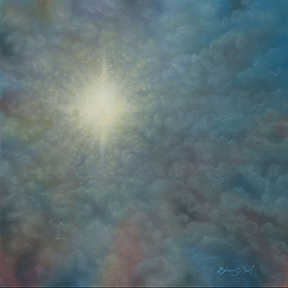 Only rarely do I produce work from what I perceive with my senses. Drawing from the appearances of things in life or nature, literally or abstractly, holds little allure for me despite my admiration of work by artists who paint what they see with their eyes. When I paint a mountain, it is the mountain I “see” projected on the screen of my mind. Reality for me is no longer defined by what is merely physical, manifested in the waking world, but by what is also in dreams and deeper, more subtle levels of awareness and experience. Through my work I seek to erase the convincing but illusory demarcation line between the thought of the mountain that exists in the mind and its projection into physical manifestation. My art is how I play with this notion and explore the relationship between desire, the objects of desire, and the fulfillment of desire, in search of that nexus where they merge into sublime, blissful peace.
Only rarely do I produce work from what I perceive with my senses. Drawing from the appearances of things in life or nature, literally or abstractly, holds little allure for me despite my admiration of work by artists who paint what they see with their eyes. When I paint a mountain, it is the mountain I “see” projected on the screen of my mind. Reality for me is no longer defined by what is merely physical, manifested in the waking world, but by what is also in dreams and deeper, more subtle levels of awareness and experience. Through my work I seek to erase the convincing but illusory demarcation line between the thought of the mountain that exists in the mind and its projection into physical manifestation. My art is how I play with this notion and explore the relationship between desire, the objects of desire, and the fulfillment of desire, in search of that nexus where they merge into sublime, blissful peace.
I am intrigued by how it is possible to create the experience of color in a place where there is no light, or the sense of vast space where no depth or height or breadth actually exists in physical reality. How does one dimension become two, and two dimensions become three?
We are all gods. We create virtual realities inside of virtual realities all the time. With the intensity of our desires we manifest a world to walk around in and a universe to explore. Then, with the help of our sciences, we trick our minds into forgetfulness and bring them around to believing that we are a product of the natural environment and a subset of its laws. My art is a practice by which I may trick my mind into remembering who I am, thus freeing it of this self-made trap of ignorance.
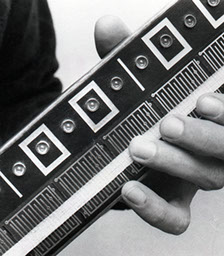 In this manner my art is a spiritual practice. This is because, in part, I tend to be in a meditative state when I’m engaged in the work, especially so when I’m playing music or designing sounds. Back when I was still a teenager, around the time when I was thinking about forming the band that would eventually become The Orkustra, I discovered that when my fingers were engaged in playing my instrument more or less automatically and my mind was focused fully on the sound, the otherwise noisome ego would go on holiday. That’s when the really good stuff would happen. Without the nearly incessant white noise of the chatterbox in my head masking my perceptions, my awareness of the awareness that abides just beyond this thin but obtuse veil would become far more acute. The sound made by a vibrating string becomes a conduit to the eternal vibration that is the very basis of all that we may ever know as human beings, and what we will know beyond our humanity. I have since learned this kind of practice has a name, in Sanskrit: Nada Yoga – the yoga of sound.
In this manner my art is a spiritual practice. This is because, in part, I tend to be in a meditative state when I’m engaged in the work, especially so when I’m playing music or designing sounds. Back when I was still a teenager, around the time when I was thinking about forming the band that would eventually become The Orkustra, I discovered that when my fingers were engaged in playing my instrument more or less automatically and my mind was focused fully on the sound, the otherwise noisome ego would go on holiday. That’s when the really good stuff would happen. Without the nearly incessant white noise of the chatterbox in my head masking my perceptions, my awareness of the awareness that abides just beyond this thin but obtuse veil would become far more acute. The sound made by a vibrating string becomes a conduit to the eternal vibration that is the very basis of all that we may ever know as human beings, and what we will know beyond our humanity. I have since learned this kind of practice has a name, in Sanskrit: Nada Yoga – the yoga of sound.
The trick is to get the small self of the ego-identified finite persona out of the way so that the infinitely greater eternal self is that which is being expressed. This is easier said then done, in spite of this essential principle being known and described to us by the sages and saints for millennia. With will and determination and a willingness to sacrifice what the ego wants for the greater goal, it is possible for a human being, on occasion, to realize the transcendent through one’s work. There is no higher purpose in life than to realize the divine, after all.
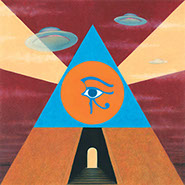 A similar process is at work when I produce visual art. If I succeed in approaching the work with single-minded attention the work becomes a meditation on whatever the theme or concept that is the center of focus. This may or may not be evident to one who views the end result. Any physical result of an artist’s labors is a mere artifact of the creative process, and its value to anyone who sees or hears it is purely subject to one’s personal orientation at the moment of making some connection to the artifact. At best, an image that I produce as a meditation will translate to the viewer in the same spirit, and the image will become a yantra – in much the same way that some of my music is a form of mantra – to be used as a tool for focusing the mind in meditation and contemplation. Some of the feedback I’ve received indicates that this happens once in awhile. This always comes as the nicest of compliments on my efforts.
A similar process is at work when I produce visual art. If I succeed in approaching the work with single-minded attention the work becomes a meditation on whatever the theme or concept that is the center of focus. This may or may not be evident to one who views the end result. Any physical result of an artist’s labors is a mere artifact of the creative process, and its value to anyone who sees or hears it is purely subject to one’s personal orientation at the moment of making some connection to the artifact. At best, an image that I produce as a meditation will translate to the viewer in the same spirit, and the image will become a yantra – in much the same way that some of my music is a form of mantra – to be used as a tool for focusing the mind in meditation and contemplation. Some of the feedback I’ve received indicates that this happens once in awhile. This always comes as the nicest of compliments on my efforts.
Mythologies, for the most part, are imaginative fictions that point to some higher truth. They are art, serving the same interests and purposes as my own art, so they tend to resonate with me. In the myths there are quests, struggles requiring great courage, and lessons to be learned, all laced with metaphor and allegory about our cultural origins, our yearnings, our aspirations for a deeper and understandable relationship with the divine, and our ambivalence regarding the gods we’ve made. These myths define us, among all creatures that we know, as uniquely self-aware. Naturally some mythological themes and symbolism will occasionally appear in my work, given my personal orientation.
I am particularly drawn to myths with strong mystical implications. Although patterns and themes from mythology are woven into much of my work, musical and visual, nowhere is this more evident than in my work for Lucifer Rising.
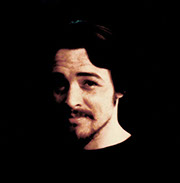 The story of Lucifer Rising, mythically speaking, is one that defies being told in words. I chose to tell it by using sound and musical themes to evoke mood and emotion. The stations of the journey are represented in the series of nine paintings I produced for the Lucifer Rising Suite boxed LP set in 2007. Eight of these pieces are somewhat like mandalas, each incorporating a central element borrowed from ancient Egyptian mystical symbolism. This motif was an aesthetic choice inspired by Ken Anger’s effective use of Egyptian symbolism in the film, and intended as a tip of the hat to him, in part. The element is the disc of Ra,representing the eternal radiance, emblazoned with The Eye of Horus, symbolizing the eternal witness of all experiences and appearances. Other elements in the series are indicative or suggestive of stages in the journey.
The story of Lucifer Rising, mythically speaking, is one that defies being told in words. I chose to tell it by using sound and musical themes to evoke mood and emotion. The stations of the journey are represented in the series of nine paintings I produced for the Lucifer Rising Suite boxed LP set in 2007. Eight of these pieces are somewhat like mandalas, each incorporating a central element borrowed from ancient Egyptian mystical symbolism. This motif was an aesthetic choice inspired by Ken Anger’s effective use of Egyptian symbolism in the film, and intended as a tip of the hat to him, in part. The element is the disc of Ra,representing the eternal radiance, emblazoned with The Eye of Horus, symbolizing the eternal witness of all experiences and appearances. Other elements in the series are indicative or suggestive of stages in the journey.
There are common threads that appear in the myths of cultures that developed independently, and in spite of these cultures being separated by great distances of time and place. This is evidenced most of all in the ancient mystical symbolism of these cultures. For example, the symbol of the all-witnessing eye in Egyptian culture we know as The Eye of Horus is echoed in Norse culture as the Eye of Odin, and appears similarly in the ancient mystical art of Asia, Europe, the Americas, and Slavic nations, in both shamanic and orthodox forms. This says to me that there is a Universal Truth that is hard wired in all of us at levels far deeper than our DNA, unseen by our fusion-powered
microscopes and telescopes:
That supreme consciousness which abides within the spiritual heart of each of us, that nameless essence that permeates and shapes even the most mundane of objects and informs the purpose of every church, temple, shrine and altar, and can only be hinted at in the archetypes and symbols in our mythologies and in our arts.

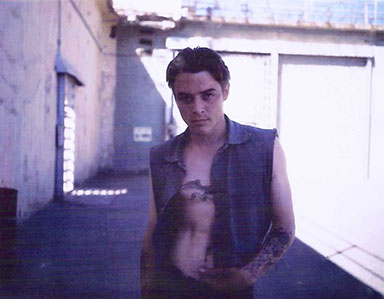
Although I had been artistically inclined from a very young age, it wasn’t until my mid-twenties that I became fully committed to the calling of artist. In late 1970, I was sent to Death Row at San Quentin where I spent two years struggling to come to terms with having committed the most destructive of all acts short of suicide, that of having killed a man for purely selfish reasons.
Then the death sentence was vacated and I was released to the San Quentin general population. It was like being tossed into a pit of vipers. Quentin in those days was an insane and violent place, and some of the guards were as malevolent and dangerous as some of the prisoners. I found myself being drawn into that violent culture by inches, responding to urges to demonstrate my manliness in acts courageous and foolhardy. It was a dark time for me, and there was no way out that I could see.
Eventually, in mid-1973, I found myself in the prison infirmary with a broken hand, my jaw broken in five places, and one of my eyes covered by an eye patch as a result of nerve damage caused by a busted cheek bone. Others were worse off. There had been a gladiator-style melee on the San Quentin yard in which I had been a willing participant…and in consequence of making that choice I manage to incur the enmity of some of the most vicious and bloodthirsty prison gang members anyone would not want to meet up with.
There are moments when even a fool might be blessed with a stroke of insight. I had come at last to the crossroads. Looking ahead on the path I had been following, all I could see was disaster. That way was a dead end. It was like I stood on the edge of an abyss. So I took one step back from the brink of losing myself completely and, in the relative safety of my prison infirmary cell, sat myself down for a good talking to.
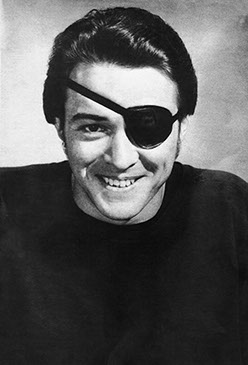 Clearly, the art of war is not the art I had been cut out for. Violence had never appealed to me, so why had I been flirting with a violent lifestyle? I realized then that there was no honor in going against one’s nature, and that in any case I no longer had any need to prove myself to anyone else. Only to myself did that need still apply. But not through any acts of violence could I ever attain what I needed. Five years earlier when I had been working on the film project with Kenneth, he confided that the reason he had wanted me to star in his film is because he saw me as embodying the spirit of the artist. He said that all true artists were Lucifers because artists were bringers of light.
Clearly, the art of war is not the art I had been cut out for. Violence had never appealed to me, so why had I been flirting with a violent lifestyle? I realized then that there was no honor in going against one’s nature, and that in any case I no longer had any need to prove myself to anyone else. Only to myself did that need still apply. But not through any acts of violence could I ever attain what I needed. Five years earlier when I had been working on the film project with Kenneth, he confided that the reason he had wanted me to star in his film is because he saw me as embodying the spirit of the artist. He said that all true artists were Lucifers because artists were bringers of light.
So there at the crossroads in San Quentin I looked back at where I had been, then to the direction I had been headed, and it became clear to me that I had lost my way. At the same time I knew that there was a burning fire in me that would express itself one way or another, if not creatively, then in some destructive or self-destructive fashion.
I made a covenant with myself then, one that I have kept to this day. It was simply that I would devote my life to creative expression as an artist, as a bringer of light, casting a light to shine in the dark places – including, and perhaps especially, those dark places within myself – and do so in a manner that would bring no harm to another person. What this was saying, in effect, is that I would never again allow my environment or the people in it to define me. This decision completely shifted the trajectory of my life.
The going was a bit wobbly at first. The hand that had been broken was the one I used to play the guitar neck, and it took over a year and two operations to get it working right again. It took years more to earn enough credibility and trust with prison officials that I would be allowed the opportunities to take on some of the types of creative projects I wanted to be engaged in. And of course there were the numerous pitfalls and snares of prison life to be avoided, and I was not always successful in avoiding them. But I managed to survive my karmas while producing a body of work that connects me to a world and its people is a meaningful way despite the obvious barriers. Forty years later, I do not regret the bargain I made with myself.
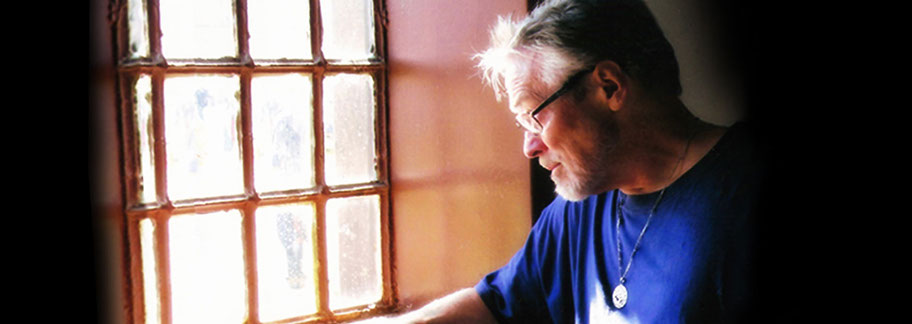
If the value of a life were measured in wins and losses, mine would be a dismal failure, for I have lost so much. Fortunately, as in the greatest of the mythic stories, the ultimate prize of self-fulfillment is always more than worth the woundings and travails it takes to attain it.
Bobby BeauSoleil
Winter 2013
© 2014 Bobby BeauSoleil and BHDesigns. All Rights Reserved. | Images are copyrighted to their respective owners. Go to our Privacy Policy.
